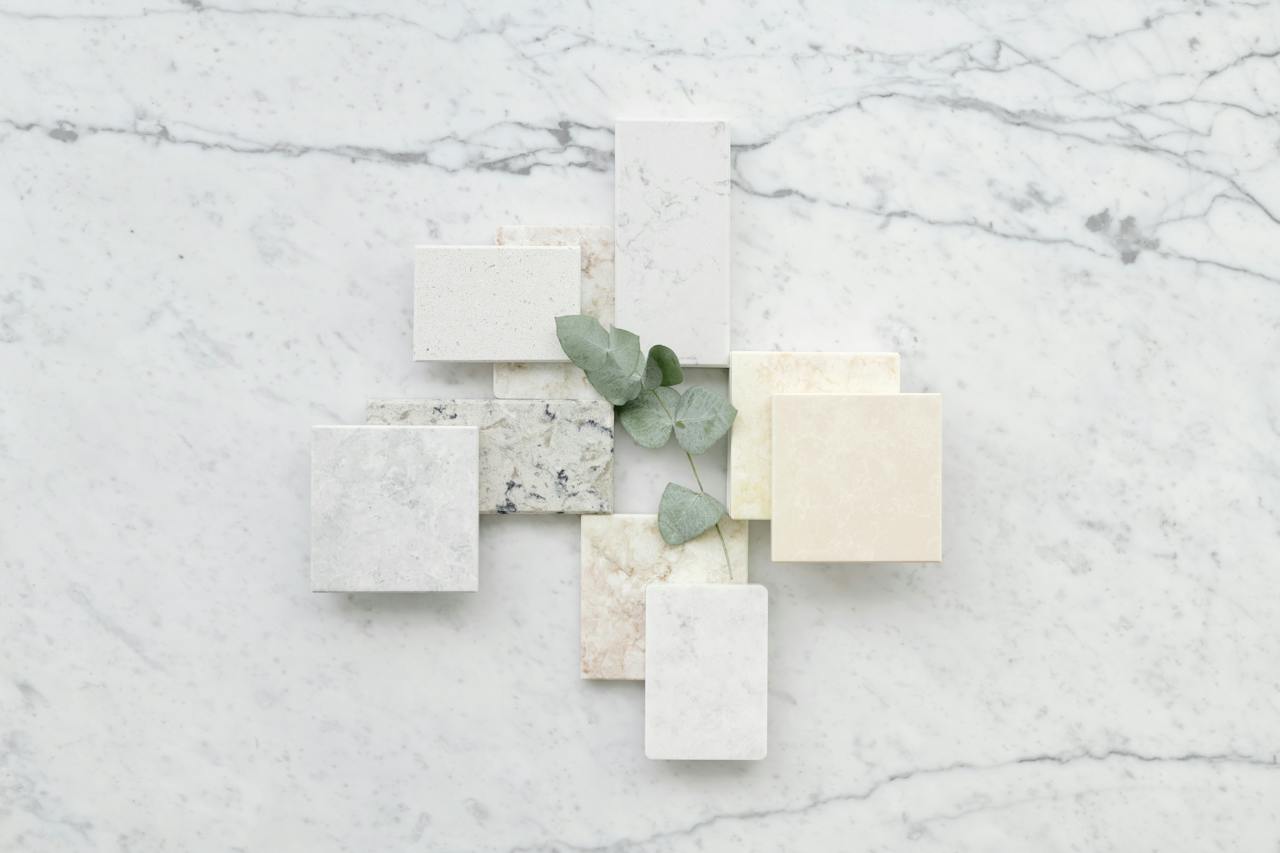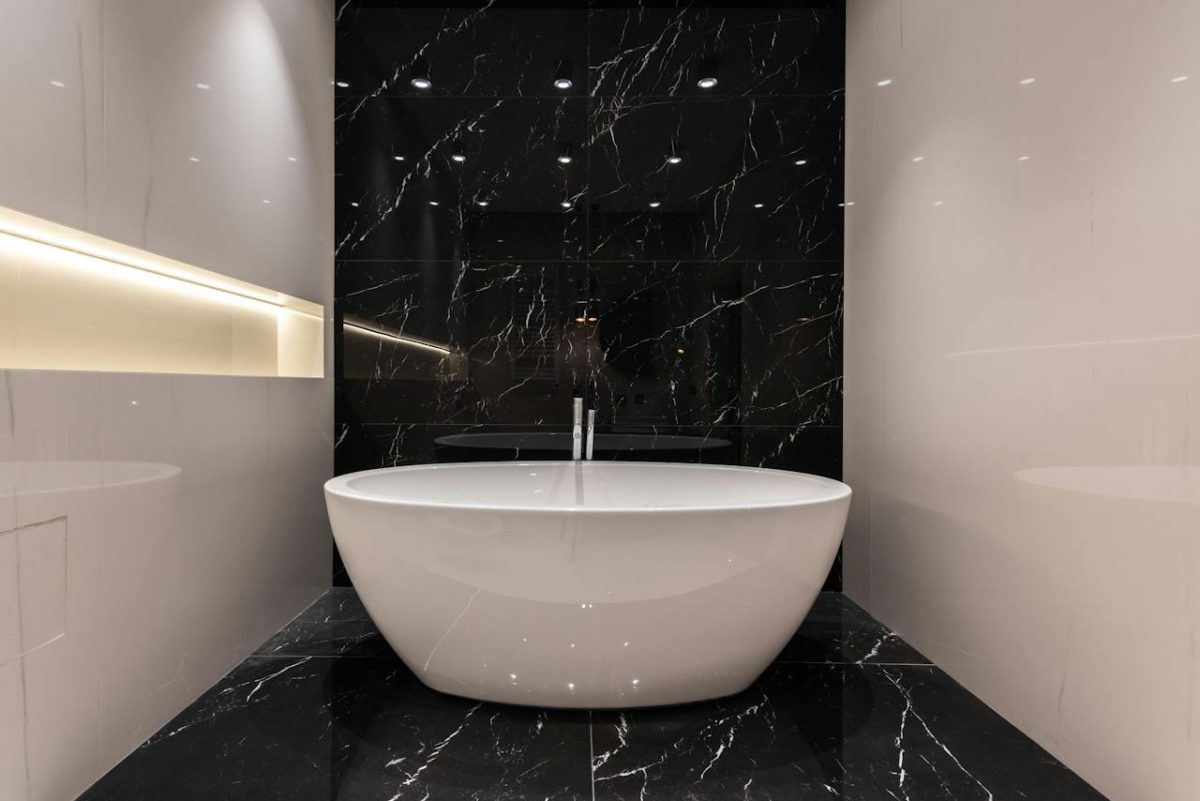
Natural Stone Marvel: A Journey through Marble
Marble, the epitome of elegance and luxury, has been revered for centuries as one of the most glamorous natural stones. With its exquisite beauty and versatility, marble has adorned historical landmarks, opulent mansions, and modern architectural marvels alike. Its timeless appeal and unique characteristics make it an irreplaceable choice in construction and architecture. In this blog, we will take you on a journey through the world of marble, exploring its significance in the realms of natural stone, construction, and architecture.
The Enigmatic Beauty of Marble
Marble, esteemed for its captivating beauty, is formed from the transformation of limestone under intense heat and pressure within the Earth’s crust. The interlocking crystal structure imbues marble with a mesmerizing array of colours and intricate veining unique to every slab. Ranging from stark whites and creams to vibrant blues, greens, and reds, each variety of marble tells a story through its distinct patterns. The allure of marble lies in its ability to elevate any space with its sheer elegance and sophistication.
Marble’s beauty has a long and rich history. For many centuries, it has been an essential material for sculpture, architecture, and interior design. The Ancient Greeks, for example, used marble to create some of their most iconic structures, such as the Parthenon and the Temple of Olympian Zeus. During the Renaissance, Michelangelo’s masterpiece, David, was carved out of a single block of Carrara marble. In contemporary times, designers and architects continue to use marble as a design feature and symbolic element of luxury.
One of the most fascinating aspects of marble’s beauty is its natural variations. Veining, streaking, and unique patterns distinguish every slab of marble. It is like a fingerprint; no two slabs are identical. The unique characteristics of marble make it an attractive option for those looking to create a personalized and eclectic interior design. You can see our range of Marbles to have a better vision about it.

Marble’s Role in Construction
When it comes to construction, marble reigns supreme. The durability and sturdiness of this natural stone make it an ideal choice for a wide range of architectural applications. From flooring and wall cladding to countertops and staircases, marble’s resilience ensures it can withstand the test of time. Its natural resistance to heat, moisture, and scratches further enhances its longevity, making it an excellent investment for any construction project. Furthermore, marble’s insulation properties make it an excellent choice for flooring material because it retains heat, keeping a room warmer during colder months.
Marble’s sturdiness alone is reason enough to choose it as a construction material, but it also offers an array of aesthetic benefits. Its smooth, polished surface creates a reflective finish that spreads natural light, making any room feel larger and brighter. For these reasons, it is a common material in public buildings such as museums or galleries. Its natural variations make it the ideal choice for creating unique and aesthetically pleasing designs, adding a warm and delicate touch to any space.
Moreover, marble’s versatility extends beyond its robustness. The sheer variety of colours and patterns available allows architects and designers to tailor marble to meet their specific aesthetic visions. Whether seeking a contemporary or classical ambiance, marble offers a timeless solution. Architects are increasingly using marble to create innovative designs that were not previously possible. They are leveraging its volumetric qualities to create unique, multidimensional surfaces.
Marble in Architecture: A Symbol of Grandeur
Throughout history, marble has played a pivotal role in architecture, adorning iconic structures around the world. From the majestic Parthenon in Athens to the magnificent Taj Mahal in India, marble has been synonymous with grandeur and opulence. Its unmatched beauty and ability to exude a sense of prestige have made it a staple in the design of palaces, museums, and government buildings.
Marble’s versatility and aesthetic qualities have made it particularly well-suited to the demands of architecture. It was a popular material used across a range of styles and periods, from Gothic to Baroque to Neoclassical architecture. Across these styles, architects manipulated marble’s colours, patterns, and textures to create a variety of effects.
Many iconic buildings feature marble prominently, one of the most notable being the Pantheon. The incredible dome of the Pantheon is made of concrete and marble, a testament to the structural qualities of this natural stone. Another well-known example is the Lincoln Memorial in Washington DC. This building is an excellent representation of the way marble can be used to create an imposing and elegant presence.
Contemporary architecture has also embraced marble as a key element in creating striking visual experiences. The unique textures and colours of marble enable architects to incorporate this natural stone into awe-inspiring facades, sculptural installations, and statement interiors. Additionally, marble’s reflective qualities make it an excellent choice for lighting design, enhancing the interplay of light and shadow in architectural spaces.

Sustainable Gem of Nature
While marble’s allure lies in its undeniable beauty, it is crucial to recognize its sustainable qualities. Being a natural stone, marble is an environmentally friendly option, as it is sourced directly from the Earth. Mining and extraction techniques have evolved to reduce environmental impact, ensuring responsible sourcing practices. Furthermore, the durability and longevity of marble contribute to reduced waste and the need for frequent replacements, adding to its sustainability profile.
Sustainability in construction is increasingly a concern for builders and architects. Marble offers an attractive option for those seeking an environmentally friendly and sustainable choice. It is also important to note that many companies are introducing new methods for creating marble, such as compressing reclaimed marble with natural resin. This is an example of a sustainable and environmentally conscious solution to the waste produced by traditional marble production.
Pros of Marble
Aesthetic appeal: Marble is one of the most visually appealing natural stones. The unique veins and patterns in each slab make it a stunning addition to any design.
Durability: Marble is a strong, long-lasting material that can withstand years of wear and tear.
Heat Resistance: Marble is an excellent heat conductor, which makes it perfect for use in homes located in hotter areas.
Versatility: The unique characteristics of marble make it a versatile material that can be used in various applications, including flooring, countertops, walls, stairs, and more.
Durability: Marble is a durable material that can withstand heavy traffic, spills, and high use.
Cons of Marble plus solutions
Porous: Marble is a porous material, which makes it vulnerable to staining and etching from acids such as lemon juice.
Solution: To combat the issue of staining and etching, marble can be sealed regularly. Applying a high-quality sealer creates a protective barrier on the surface, preventing liquids from penetrating and staining the marble. It is also essential to clean up spills immediately and use coasters or mats under glasses and bottles to avoid contact with acidic substances.
High maintenance: Marble requires regular maintenance to keep it looking its best. It requires periodic sealing, polishing, and cleaning, which makes it a high-maintenance material.
Solution: Regular maintenance is crucial for preserving the beauty of marble. This includes routine cleaning using non-abrasive, pH-neutral cleaners specifically formulated for natural stone. Polishing the surface periodically can help restore its shine. Consulting with experts and professional stone care specialists can provide valuable guidance on the best practices for maintaining marble.
Cost: Marble is an expensive natural stone. The cost of marble can be a consideration in selecting this material since it might not be within budget for some projects.
Solution: If budget is a concern, consider using marble selectively in key areas to maintain its luxurious appeal while using more cost-effective materials for other parts of the project. Alternatively, explore alternative marble products that mimic the appearance of marble at a lower cost, such as porcelain tiles or engineered quartz countertops.
Susceptibility to scratching: Marble is vulnerable to scratches and etches by sharp or heavy objects, can be a durability concern, especially in a high-traffic area.
Solution: To minimize the risk of scratching, it is advisable to use cutting boards and trivets when working with sharp objects in the kitchen or dining area. Felt pads can also be applied to the bottom of furniture to prevent scratching on marble floors.
Weight: Marble is heavy, and its installation requires specialized equipment and skilled labour, which can add to the overall cost of installation.
Solution: Due to the weight of marble, professional installation is crucial. Hiring experienced contractors who specialize in working with marble will ensure proper handling and installation. They possess the necessary equipment and expertise to handle the heavy slabs and tiles and ensure a secure and long-lasting installation.
By implementing these solutions, many of the cons associated with marble can be effectively managed, allowing you to enjoy the beauty and durability of this natural stone while mitigating potential challenges. However, while marble is a beautiful and durable choice for construction and design projects, it may not be the best fit for every project. Consider the pros and cons to determine if marble is the right material for your design and budget constraints.

The Enduring Legacy of Marble
Marble, with its enchanting beauty and versatile character, continues to captivate both designers and enthusiasts in the realm of natural stone, construction, and architecture. From historical landmarks to contemporary masterpieces, marble’s timeless appeal reigns supreme. As we delve into the world of marble, it becomes evident that this natural stone is not just a construction material; it is a testament to the brilliance of nature and an embodiment of everlasting elegance. You can take a look on our products and see its beauty, robustness, and versatility make it one of the most sought-after materials in design and construction today, and it will undoubtedly continue to inspire architects and designers for generations to come. At CASTLEKING, we are more than happy to give you more information on exquisite products of Marble.

